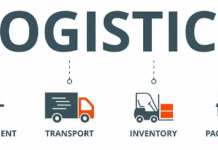Across the country, funeral preplanning is becoming more common among millennials, a quiet cultural shift earlier generations rarely embraced. With shifting economics, new technologies, and changing family structures, their decisions reflect not just practicality but a redefinition of how end-of-life choices fit into daily values and long-term responsibility.
Financial debt, smaller households, and environmental priorities intersect with digital habits, pushing conversations about funerals from hushed family moments to structured, proactive planning. This generational move signals not resignation, but empowerment: a chance to lift burdens, minimize conflict, and design remembrances that reflect both individuality and shared meaning.
Tackling Expenses Before They Spiral
Funeral costs often arrive when families feel least prepared to think rationally, magnifying both financial and emotional strain. Millennials, used to budgeting across debts and delayed milestones, increasingly treat funeral planning as another form of financial foresight. Selecting burial methods, service details, and containers in advance prevents rushed decisions and shields loved ones from costly last-minute upgrades.
Breaking costs into staged payments provides stability, turning a looming bill into a manageable expense. Independent purchases, like urns or modest coffins chosen from reputable retailers, trim expenses without sacrificing dignity. This measured approach not only protects savings but also preserves the space families need to grieve without distraction.
Tech Habits Changing Funeral Planning
Scrolling through a phone screen now replaces flipping through binders in a quiet office. Galleries, immersive previews, and side-by-side comparisons give families a clearer sense of choices without pressure. Vendor platforms provide transparency with visible pricing, while quick digital checkout locks decisions in place with less back-and-forth. This pace mirrors how millennials already shop, plan, and budget in daily life.
Beyond browsing, digital tools foster shared responsibility. Cloud folders, secure notes, and simple logins allow relatives to access the same documents without repeated calls. Time-stamped contracts and e-signatures add reassurance that instructions will be honored. What once felt like a burden of paperwork now becomes a streamlined process woven into habits of convenience, collaboration, and clarity.
Aligning Choices With Everyday Values
The way a memorial is shaped often mirrors the values lived each day. A backyard gathering with native plants and handwritten programs reflects a preference for simplicity and care for the environment. Choosing biodegradable caskets, cloth shrouds, or handmade urns becomes more than a cost decision—it becomes an extension of personal ethics carried into a final farewell.
Recording preferences also preserves cultural threads and family rituals. A hymn, a favorite recipe, or a particular gesture gains meaning when noted clearly in advance. Relatives aren’t left to guess, but instead follow a path already aligned with belief and tradition. Planning with intention turns a ceremony into a true reflection of a life and its guiding values.
Adjusting To Different Family Realities
Modern families often exist outside traditional molds, making clarity in end-of-life planning essential. When partners are unmarried or relatives live apart, disputes over decisions can emerge quickly. Laying out preferences in signed directives and naming trusted agents avoids uncertainty, giving the right voices authority when it matters most.
Simple steps—like notarizing a directive or designating an executor—prevent confusion from turning into conflict. Family calls or brief discussions, paired with clear documentation, promote understanding and unity. These choices create not just legal clarity but emotional reassurance, sparing relatives from arguments and freeing them to focus on memory and support.
Mental Clarity And Reduced Conflict
The quiet after a funeral home call can feel heavy, but advance planning softens that weight. Specific notes on tone, a named coordinator, and an itemized list of choices prevent uncertainty from overshadowing grief. When roles are clear and wishes recorded, loved ones exchange hesitation for presence, focusing on memory instead of logistics.
Documented plans provide steadiness for both the planner and those left behind, sparing them second-guessing and regret. A short video or handwritten note paired with signed forms turns instructions into reassurance. With clarity established, families move forward with less conflict, finding comfort in carrying out meaningful remembrance.
Funeral planning is shifting from avoidance to intention, shaped by new financial pressures, digital tools, and changing family patterns. What once felt like a reluctant duty now becomes a conscious act of care, reducing strain for loved ones while honoring personal beliefs. Selecting services in advance, choosing sustainable options, and recording clear instructions all ease future burdens and prevent conflict. This approach reflects foresight, but also compassion—linking everyday values to the most final of choices. Instead of silence or guesswork, families inherit clarity. The result is not only practical stability but also a lasting expression of love across generations.






